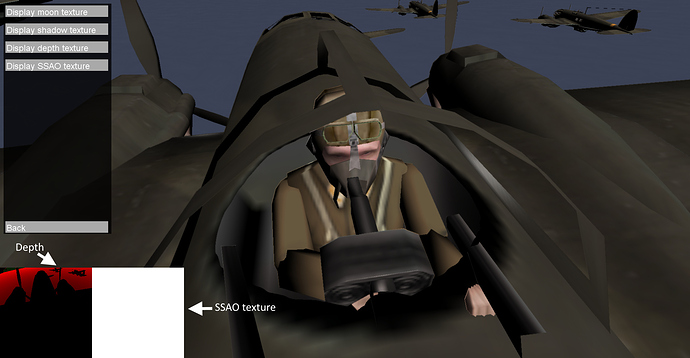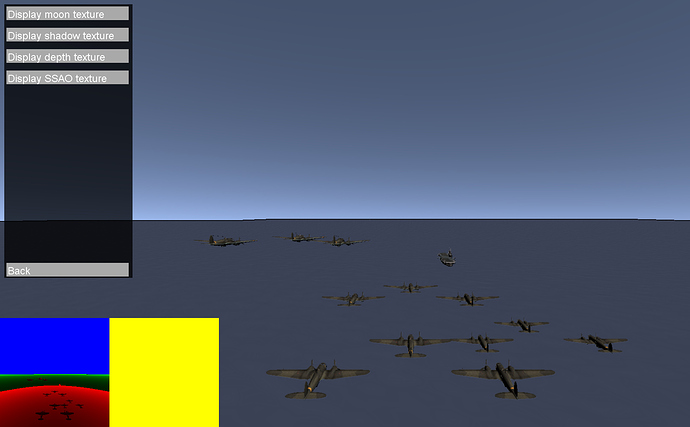Tried to add SSAO to my deferred renderer, should have been trivial, but nothing I do works
At first I thought it was depth buffer precision issues, so I swapped from using a log depth buffer to a linear depth buffer. I checked this worked by actually writing the depth buffer to the log and it’s perfect.
I can see that the depth varies from pixel to pixel , not by a lot, but by enough that SSAO should work.
So I ripped the shader apart and went down to a really trivial version that just samples 16 pixels around the target pixel and accumulates the pixels that are in front of the target pixel in the depth plane
Doesn’t work,
I get nothing
The shader has been ripped apart and now is as simple as it can be. It will not generate good looking SSAO, but it should produce SOMETHING
///////////////////////////////////////////////////////////////////////////////////////
// Pixel shaders
///////////////////////////////////////////////////////////////////////////////////////
float4 MainPS(VertexShaderOutput input) : COLOR
{
//float3 random = normalize(tex2D(RandomTextureSampler, input.UV * 4.0).rgb);
float depth = tex2D(depthSampler, input.UV).r;
//float3 position = float3(input.UV, depth);
//float3 normal = normal_from_depth(input.UV);
//float radius_depth = radius / depth;
//float occlusion = 0.0;
float diff = 16.0;
[unroll]
for (int i = 0; i < 16; i++)
{
float2 sp = sample_sphere[i].xy * 8 * halfPixel;
float occ_depth = tex2D(depthSampler, input.UV + sp).r;
//float3 ray = radius_depth * reflect(sample_sphere[i], random);
//float3 hemi_ray = position + sign(dot(ray,normal)) * ray;
//
//float occ_depth = tex2D(depthSampler, saturate(hemi_ray.xy)).r;
//float difference = (depth - occ_depth);
if (depth > occ_depth)
diff = diff-1;
//occlusion += step(falloff, difference) * (1.0 - smoothstep(falloff, area, difference));
}
//float ao = 1.0 - total_strength * occlusion * (1.0 / samples);
//float res = saturate(ao + base);
float res = saturate(diff / 16.0f);
return float4(res, res, res, 1.0);
//return float4(debug_depth(depth), 1.0);
}
I cannot get the content builder to generate debug shaders, it just crashes, so I cannot debug the shader itself.
I have checked the depth buffer is correct many times and even done a pass where I took a dump of the depth buffer and did the SSAO in C# instead of the shader, which produced the expected awful results.
I can tell you the difference between adjacent pixels in the depth buffer is in the centimetres range (0.01 -> 0.09) but that should be enough for the shader to work.
Has anyone got any ideas how I can continue?
It’s doing my head in


